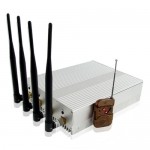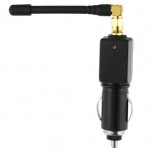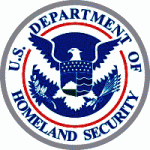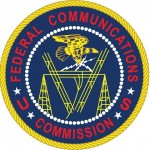FCC & DHS Issue Joint Bulletin for First Responders on Signal Jammers
The Federal Communications Commission and Department of Homeland Security have issued a joint bulletin on cellular, GPS, Wi-Fi and other signal jammers. Signal jammers are illegal and can interfere with operational channels commonly used by first responders, disrupting vital communications or affecting emergency operations. There have been documented incidents of the loss of first responder radio communications near areas where cell and GPS jammers were being used. Loss of cellular coverage was also observed in these areas, which prevented 9-1-1 and other emergency calls from being made. Jammers can target cellular, GPS, Wi-Fi and other radio signals individually or in combination.
Indicators of Jamming: Disruption or failure of wireless communications or mapping equipment, including cellular or GPS devices, for unknown reasons could indicate interference by a jammer.
Specific indicators might include:
- Inability to transmit or receive on two-way radios outside of known “dead zones”
- Unusual sounds on designated frequencies, such as white noise, intermittent electronic chirping, or tones
- Lack of normal sounds heard on designated frequencies, or presence of “dead air”
- Technical difficulties that appear and disappear intermittently
- Lack of audible click when keying microphone
- Abrupt loss of communications, especially if stationary
- Loss of lock, intermittent disruption, or general failure
Actions: Incidents where a suspect operating a jammer is identified should be reported to the FCC at www.fcc.gov/complaints or 1-888-CALL-FCC (1-888-225-5332). The FCC will investigate and take follow-up administrative enforcement action against the subject where applicable. Reports should include the following: For an ongoing incident, or if a suspect is identified, provide:
- Identification details of suspect using illegal equipment (name, DOB, vehicle tag, etc.)
- Description or identification of suspected jamming device (including photo if available)
For all incidents, provide:
- Reporting party’s name/contact information/agency, date, time, duration, location, and affection mission or operations
- Nature of the disruption (such as single occurrence, recurring, intermittent or loss of signal indication)
- Equipment affected (type, model, application)
- Environmental conditions (weather, topography, terrain, time of day)
- Steps take to improve or regain ability to use equipment
- Other wireless devices not affected by the suspected jamming or anomaly
The FCC can assist with legal and technical questions when jammers are encountered or suspected. Contact points are through jammerinfo@fcc.gov or the FCC’s Spectrum Enforcement Division at (202) 418-1160 (9 a.m. to 5 p.m. ET) or 1-888-CALL-FCC. Additional public information is available at www.fcc.gov/jammers. Jammer Examples (including disguised devices) 


Applicable Laws: Federal laws prohibit any person from willfully or maliciously interfering with authorized radio communications and prohibit the manufacture, sale, marketing, importation, distribution or shipment of jamming equipment. State laws may also prohibit the possession or certain uses of jammers (e.g., interference to police communications) and thus provide a basis for local seizure and prosecution. Law enforcement agencies should develop a strategy in advance with their office of legal counsel.
The Communications Act of 1934
Section 301 – requires persons operating or using radio transmitters to be licensed or authorized under the Commission’s rules (47 U.S.C. § 301)
Section 302(b) – prohibits the manufacture, importation, marketing, sale or operation of these devices within the United States (47 U.S.C. § 302a(b))
Section 333 – prohibits willful or malicious interference with the radio communications of any station licensed or authorized under the Act or operated by the U.S. Government (47 U.S.C. § 333)
Section 503 – allows the FCC to impose forfeitures for willful or repeated violations of the Communications Act, the Commission’s rules, regulations or related orders, as well as for violations of the terms and conditions of any license, certificate or other Commission authorization, among other things (47 U.S.C. § 503)
Section 510 – allows for seizure of equipment used, possessed, advertised or sold with knowing intent to violate Sections 301 or 302 (47 U.S.C. § 510)
FCC Rules
Section 2.803 – prohibits the manufacture, importation, marketing, sale or operation of these devices within the United States (47 C.F.R. § 2.803)
Section 2.807 – provides for certain limited exceptions, such as the sale to U.S. government for authorized, official use (47 C.F.R. § 2.807)
The Criminal Code (Enforced by the Department of Justice)
Title 18, Section 1362 – prohibits willful or malicious interference to U.S. government communications; subjects the operator to possible fines, imprisonment or both (18 U.S.C. § 1362)
Title 18, Section 1367(a) – prohibits intentional or malicious interference to satellite communications; subjects the operator to possible fines, imprisonment or both (18 U.S.C. § 1367(a))



